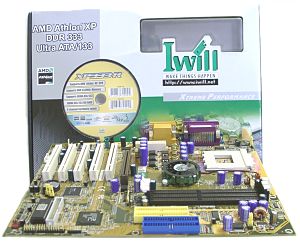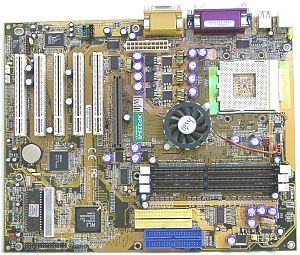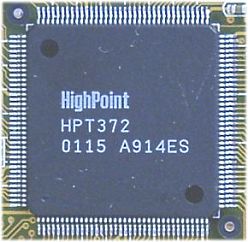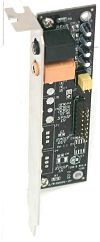
Iwill was first to release a mainboard on this chipset. But the board
is a bit disappointing - apart from lack of PC2700 memory support (the
DDR333 works only with a 166 MHz FSB), the board failed to start
from the first attempt. In all other respects the XP333-R is a typical
product from Iwill. The board comes in a plastic bag packed in a usual
cardboard box with two cut-outs on the front side. There are also a user's
manual, 2 ATA 66/100/133 and 1 FDD cables, a bracket for a rear computer
panel with connectors for rear speakers and a central channel/subwoofer,
and a CD. The latter contains drivers, manuals for different boards of
this company in PDF, several hardware monitoring programs, Adobe Acrobat
Reader and McAfee VirusScan 5.21. The CD is bootable - it can help you
to make diskettes with drivers which can be required yet before installation
of an operating system.

The board is of high quality, but we had some problems. Besides, the
layout is not the best - positions of an FDD connector, of a power supply
one and audio-ins can be an obstacle for an assembler. Besides, there is
no an AGP clip for fixing a video card. On the other hand, the PCB incorporates
a HighPoint chip which provides operation of the IDE RAID with the speediest
interface - ATA133.
Besides, it is possible to connect a 6-channel acoustic system direct
to the board; this is supported by the C-Media chip. For connection there
is a SuperAudio bracket with two outputs: for rear channels and a central
one/subwoofer.


The socket has two nacreous stripes of plastic on its sides which protect
textolite from scratches and splitting off which can take place during
installation of a cooler on the CPU. The board uses a three-phase impulse
voltage stabilizer which together with high-capacity LowESR capacitors
provides high stability even in modes different from the rated ones. The
board has several standard switches.
The BIOS is based on the AWARD Modular BIOS v.6.00PG and offers a great
deal of settings for memory timings, for AGP and PCI buses etc. You can
change an FSB frequency in 1 MHz steps, and voltage of the processor and
of the memory.
The boards from Iwill can be considered reference ones for ALi chipsets
because ALi itself doesn't introduce its own reference samples.
Test results:
Write a comment below. No registration needed!




